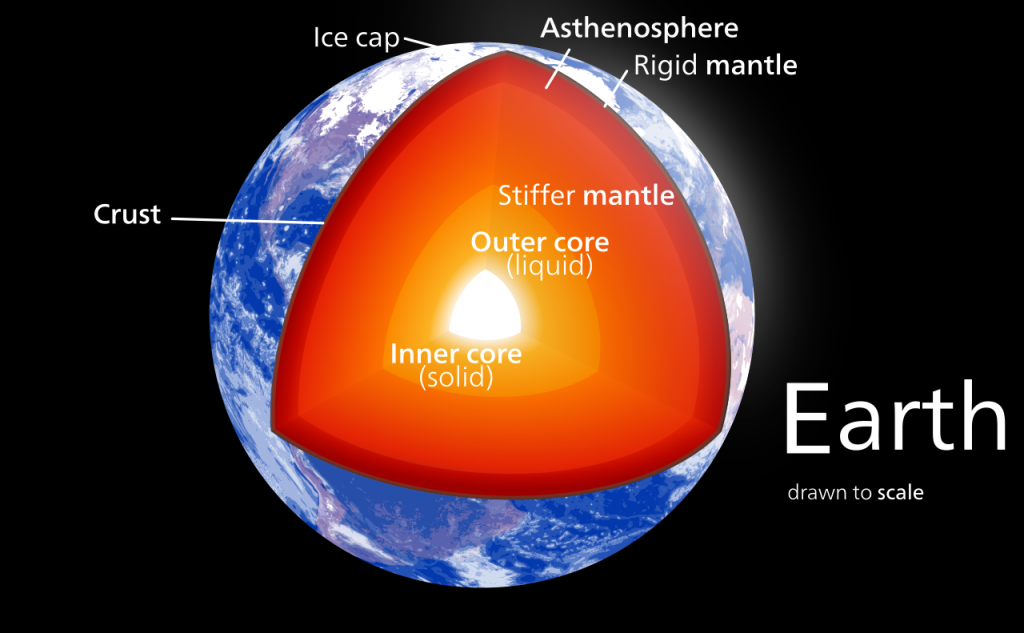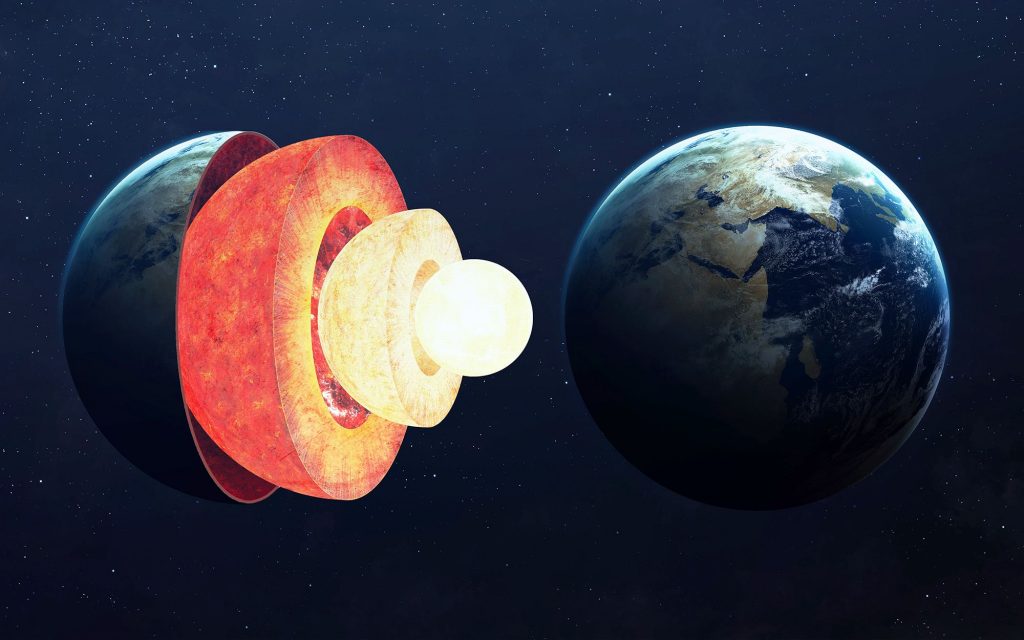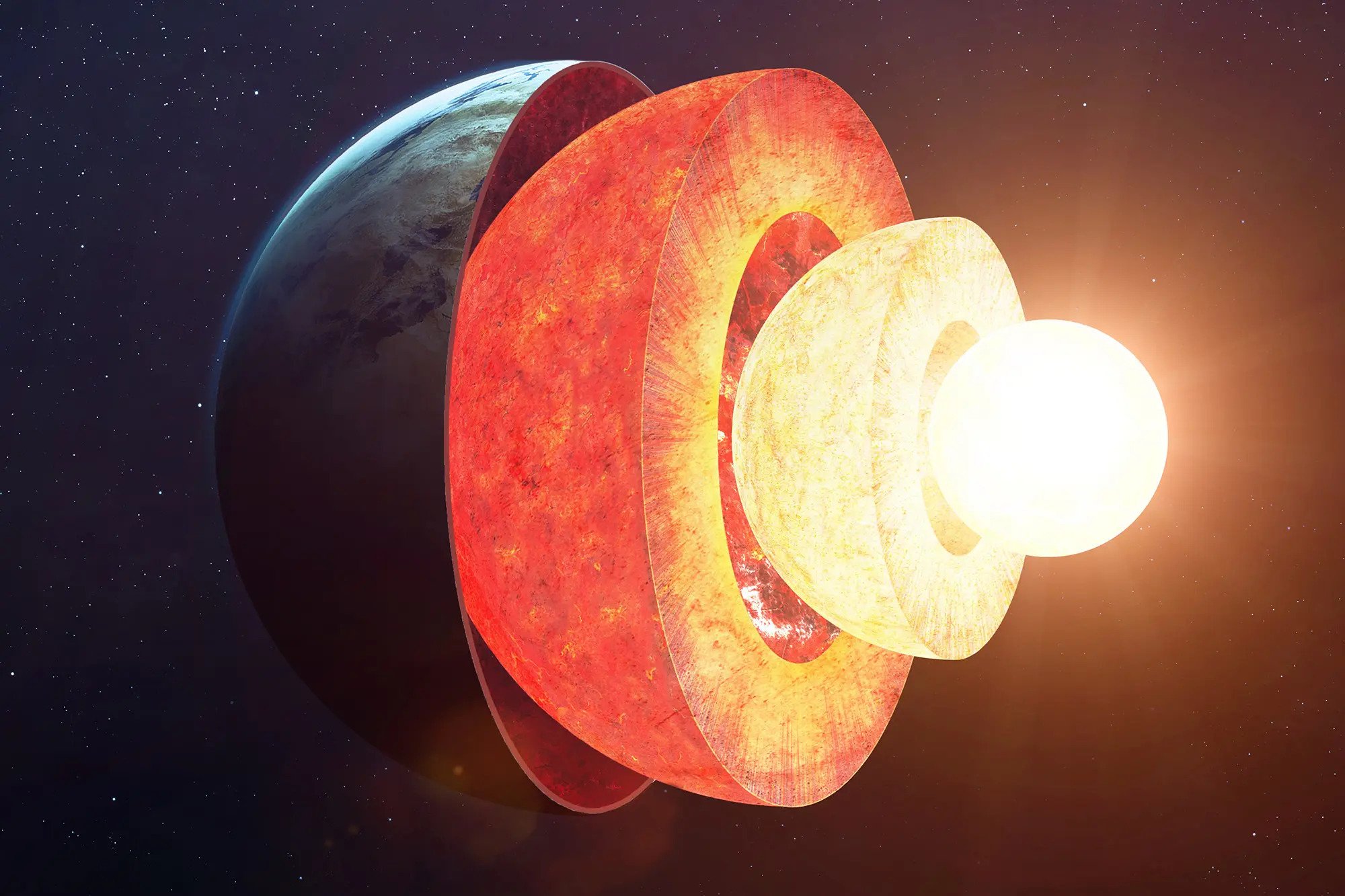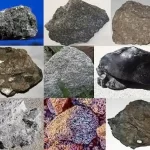The Earth’s structure is divided into four main components: the crust, the mantle, and the inner and outer cores. If you think about it, our planet is a lot like an onion—made up of layers after another.
The thin crust is the outermost layer, mostly made of solid rock, basalt, and granite. It’s the surface we see and walk on.
The next layer is the mantle, which consists of a hot, dense layer of silicate rock and lies below the crust. It’s up to 2900 km (1802 miles) thick, and is the planet’s thickest layer. The mantle also makes up 84% of Earth’s total volume.
Then, there’s the core, the planet’s hot, dense center. It’s divided into two parts: the inner and outer cores.
The outer core is a layer composed of liquid iron and nickel. It lies below the mantle and above the planet’s inner core. This fluid layer is sweltering hot, between 8,132° and 9,932° Fahrenheit.
And finally, the solid inner core, the Earth’s innermost layer. It’s primarily a hot, solid ball of iron with a radius of about 1,220 kilometers (758 miles). The inner core’s temperature is estimated to be about 9,392° Fahrenheit, which is nearly the same temperature as the Sun’s surface!

Basically, the deeper you delve into the Earth’s interior structure, the hotter it gets.
Moreover, the inner core’s pressure is almost 3.6 million atmospheres (atm). And this intense pressure prevents the iron ball from melting.
Now, it’s always been a mystery that’s puzzled many scientists. How does the Earth stay as hot as the Sun’s surface at the core for billions of years? Just how is that possible?
First, let’s talk about where our planet gets its heat from.
Our planet’s heat has two sources: one is from when it formed 4.5 billion years ago. The Earth was made from a gigantic gaseous cloud called a solar nebula that grew larger thanks to the collisions and merging between bits of rock and debris.
During these collisions, huge amounts of heat were produced that were enough to melt the planet. However, some of the generated heat was lost in space, but the rest remained and was locked inside the Earth.
The other heat source is the decay of radioactive elements called isotopes, which are distributed everywhere. Radioactive isotopes are unstable chemical elements that release radiation, a form of energy when it breaks down and becomes stable. And then, these energies convert into heat.
The four radioactive isotopes, Potassium-40, thorium-232, uranium-235, and uranium-238, keep the Earth’s core hot. And the good thing is that Earth will not run out of these heat sources because there are enough of uranium-238 and thorium-232, to last for billions of years.

Besides keeping the Earth’s inner core hot, these radioactive isotopes that release energy also provides the heat that makes the Earth’s plates move. These plates are the pieces of the planet’s crust and uppermost mantle. So think of the movement of the plates as tangible proof that the Earth’s core stays hot.
The movement of plates is what triggers volcanic eruptions and earthquakes. In addition, it is also important because it makes the Earth habitable. It promotes the life of the Earth’s biosphere. It’s also what formed the continents we live on and constantly creates new oceans and lands as the moving plates keep changing the Earth’s surface.
If the plates stop moving, it would mean the Earth has no more internal heat. Without internal heat the Earth would cool down, making it become uninhabitable.







